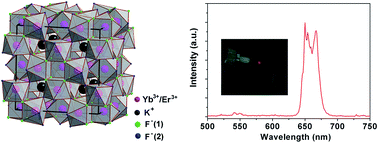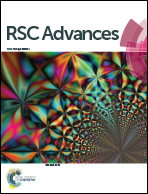Red up-conversion emission in α-KYb3F10:Er3+ films made by electrodeposition†
Abstract
Er3+ ions doped α-KYb3F10 thin films were obtained from aqueous solutions through electrodeposition near room temperature. The annealed films show almost single band red emission excited by a 980 nm laser and a two photon up conversion mechanism is involved.


 Please wait while we load your content...
Please wait while we load your content...